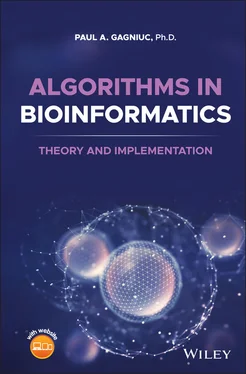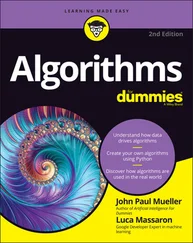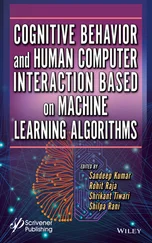301 301
302 302
303 303
304 304
305 305
306 306
307 307
308 308
309 309
310 310
311 311
312 312
313 313
314 314
315 315
316 316
317 317
318 318
319 319
320 320
321 321
322 322
323 323
324 324
325 325
326 326
327 327
328 328
329 329
330 330
331 331
332 332
333 333
334 334
335 335
336 336
337 337
338 338
339 339
340 340
341 341
342 342
343 343
344 344
345 345
346 347
347 348
348 349
349 350
350 351
351 352
352 353
353 354
354 355
355 356
356 357
357 358
358 359
359 360
360 361
361 362
362 363
363 364
364 365
365 366
366 367
367 368
368 369
369 370
370 371
371 372
372 373
373 374
374 375
375 376
376 377
377 378
378 379
379 380
380 381
381 382
382 383
383 384
384 385
385 386
386 387
387 388
388 389
389 391
390 392
391 393
392 394
393 395
394 396
395 397
396 398
397 399
398 400
399 401
400 402
401 403
402 404
403 405
404 406
405 407
406 408
407 409
408 410
409 411
410 412
411 413
412 414
413 415
414 416
415 417
416 418
417 419
418 420
419 421
420 422
421 423
422 424
423 425
424 426
425 427
426 428
427 429
428 430
429 431
430 432
431 433
432 434
433 435
434 436
435 437
436 438
437 439
438 441
439 442
440 443
441 444
442 445
443 446
444 447
445 448
446 449
447 450
448 451
449 452
450 453
451 454
452 455
453 456
454 457
455 458
456 459
457 460
458 461
459 462
460 463
461 464
462 465
463 467
464 468
465 469
466 470
467 471
468 472
469 473
470 474
471 475
472 476
473 477
474 478
475 479
476 480
477 481
478 482
479 483
480 484
481 485
482 486
483 487
484 489
485 490
486 491
487 492
488 493
489 494
490 495
491 496
492 497
493 498
494 499
495 500
496 501
497 502
498 503
Algorithms in Bioinformatics
Theory and Implementation
Paul A. Gagniuc
University Politehnica of Bucharest
Bucharest, Romania

This first edition first published 2021
© 2021 John Wiley & Sons, Inc.
All rights reserved. No part of this publication may be reproduced, stored in a retrieval system, or transmitted, in any form or by any means, electronic, mechanical, photocopying, recording or otherwise, except as permitted by law. Advice on how to obtain permission to reuse material from this title is available at http://www.wiley.com/go/permissions.
The right of Paul A. Gagniuc to be identified as the author of this work has been asserted in accordance with law.
Registered Office
John Wiley & Sons, Inc., 111 River Street, Hoboken, NJ 07030, USA
Editorial Office
111 River Street, Hoboken, NJ 07030, USA
For details of our global editorial offices, customer services, and more information about Wiley products visit us at www.wiley.com.
Wiley also publishes its books in a variety of electronic formats and by print-on-demand. Some content that appears in standard print versions of this book may not be available in other formats.
Limit of Liability/Disclaimer of Warranty
The contents of this work are intended to further general scientific research, understanding, and discussion only and are not intended and should not be relied upon as recommending or promoting scientific method, diagnosis, or treatment by physicians for any particular patient. In view of ongoing research, equipment modifications, changes in governmental regulations, and the constant flow of information relating to the use of medicines, equipment, and devices, the reader is urged to review and evaluate the information provided in the package insert or instructions for each medicine, equipment, or device for, among other things, any changes in the instructions or indication of usage and for added warnings and precautions. While the publisher and authors have used their best efforts in preparing this work, they make no representations or warranties with respect to the accuracy or completeness of the contents of this work and specifically disclaim all warranties, including without limitation any implied warranties of merchantability or fitness for a particular purpose. No warranty may be created or extended by sales representatives, written sales materials or promotional statements for this work. The fact that an organization, website, or product is referred to in this work as a citation and/or potential source of further information does not mean that the publisher and authors endorse the information or services the organization, website, or product may provide or recommendations it may make. This work is sold with the understanding that the publisher is not engaged in rendering professional services. The advice and strategies contained herein may not be suitable for your situation. You should consult with a specialist where appropriate. Further, readers should be aware that websites listed in this work may have changed or disappeared between when this work was written and when it is read. Neither the publisher nor authors shall be liable for any loss of profit or any other commercial damages, including but not limited to special, incidental, consequential, or other damages.
Library of Congress Cataloging-in-Publication Data
Names: Gagniuc, Paul A., author.
Title: Algorithms in bioinformatics : theory and implementation / Paul A. Gagniuc, Polytechnic University of Bucharest, Bucharest, Romania.
Description: First edition. | Hoboken, NJ : Wiley, 2021. | Includes bibliographical references and index.
Identifiers: LCCN 2021004386 (print) | LCCN 2021004387 (ebook) | ISBN 9781119697961 (cloth) | ISBN 9781119697954 (adobe pdf) | ISBN 9781119697992 (epub)
Subjects: LCSH: Bioinformatics. | Algorithms.
Classification: LCC QH324.2 .G34 2021 (print) | LCC QH324.2 (ebook) | DDC 570.285–dc23
LC record available at https://lccn.loc.gov/2021004386
LC ebook record available at https://lccn.loc.gov/2021004387
Cover Design: Wiley
Cover Image: © Science Photo Library/Alamy Stock Photo
I dedicate this book to my family,
my children Nichita and Ana,
my beautiful wife Elvira,
and to my mother-in-law Anastasia.
Algorithms in Bioinformatics: Theory and Implementation is a concise yet comprehensive textbook of bioinformatics, which describes some of the main algorithms that are used to elucidate biological functions and relationships. This unique guide to Algorithms in Bioinformatics approaches the subject along the four convergent lines of mathematics, implementation, simulation, experimentation, and can be ideal for upper-undergraduate bioinformatics courses, researchers, doctoral students, and sociologists or engineers charged with data analysis. This work first begins with a general introduction to biology, which is meant to bring a more concrete understanding of the molecular processes concerning the field of bioinformatics. Following this introduction, an in-detail look is made to subjects like sequence alignment, forced alignment, detection of motifs, sequence logos, Markov chains, or information entropy. Other novel approaches are also described, such as self-sequence alignment, objective digital stains (ODSs) or spectral forecast, and the discrete probability detector (DPD) algorithm. This work also contains thorough step-by-step explanations regarding the meaning of the background models in bioinformatics from several angles. More importantly, it introduces the readers to the art of algorithms, shows how to design computer implementations, and provides extensive worked examples with detailed case studies. The implementations presented here point out how native programming in Javascript can broaden the horizons of possibilities in bioinformatics by considering the might of modern Internet browsers. Graphical illustrations are used for technical details on computational algorithms to aid an in-depth understanding of their inner workings. Moreover, this work brings to the reader's attention more than 100 open-source implementations and 33 Powerpoint presentations.
Читать дальше













